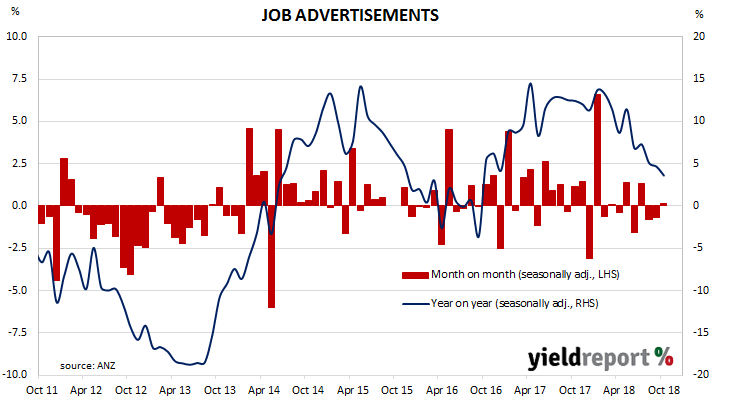ANZ’s job advertisement survey is well-known as a leading indicator of employment numbers in Australia. As such, it is inversely related to the unemployment rate. ANZ’s survey reflects changes in demand for labour and it provides another measure of activity in the economy. There is also a fairly good inverse relationship between changes in Australia’s unemployment rates and changes in the RBA cash rate. Understanding the path of Australia’s unemployment rate has historically provided a reliable indicator of RBA rate changes.
From mid-2017 onwards, year-on-year growth rates in the survey’s total number of advertisements exceeded 10%. That was until recently; figures from August and September indicated a reduction in the number of employment advertisement and the annual growth rate fell back markedly.
October’s figures have now been released and, after revisions and seasonal adjustments, total advertisements increased by 0.2% to 175,905. On a 12 month basis, total job advertisements grew by 3.6%, a fall from September’s comparable growth rate of 4.7%.
 Bond yields finished the day higher. Yields on 3-year ACGBs were 3bps higher at 2.15%, 10-year yields had increased by 4bps to 2.75% and 20-year ACGBs had gained 6bps to 3.11%. The Aussie dollar was broadly unchanged at 71.90 US cents despite a move above 72.00 US cents shortly after the report’s release.
Bond yields finished the day higher. Yields on 3-year ACGBs were 3bps higher at 2.15%, 10-year yields had increased by 4bps to 2.75% and 20-year ACGBs had gained 6bps to 3.11%. The Aussie dollar was broadly unchanged at 71.90 US cents despite a move above 72.00 US cents shortly after the report’s release.

